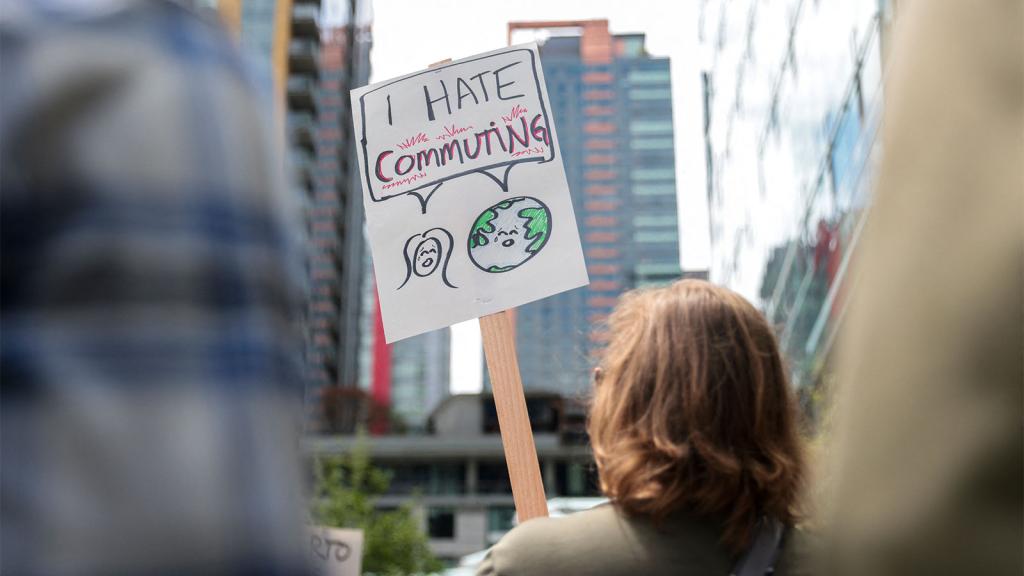
If you’ve ever gone in for a manicure and, getting a good whiff of the stuff, wondered what sort of chemicals create a smell like that, you’ve hit the nail polish issue on the head.
Those tiny little glass bottles of paint that we apply so gingerly to our fingernails and toenails — and unless you’re a manicure Michelangelo, often our skin as well — contain a long list of chemicals, some of them known to cause a host of health problems ranging from infertility to cancer. And lest you think the FDA is keeping a close eye on your mani/pedi products, the truth is that the governmental agency doesn’t test, review, or approve the ingredients — and doesn’t even require the companies making the products to conduct safety testing. In most cases, virtually any ingredient can be used.
The worst of these include toluene, a toxin that has been linked to birth defects; formaldehyde, a carcinogen and common indoor air pollutant; and dibutyl phthalate, or DBP, a plastic softener that has been much-maligned in the news of late for its role in a number of health problems including infertility, reproductive cancers, and disruptions in fetal development.
Grist’s Pick
Revlon Sheer Translucide nail enamel
0.5 fl. oz., $4.99
In 2004, DBP, which helps prevent chipping when added to nail polish, was banned by the E.U. Soon after, many U.S. cosmetics companies also began to eliminate DBP — as well as toluene and formaldehyde — from their nail polish formulas, thanks to pressure from groups like the Campaign for Safe Cosmetics.
But does the less-chemical stuff work just as well? That’s what I wanted to find out: I chose five different major cosmetic brands that have eliminated toluene, formaldehyde, and DBP from all of their formulas. I applied each polish — all in shades of light pink — to two fingernails, one on each hand, alternating fingers so as to even out wear. During the process, I noted how strong the fumes were and how long it took each of two coats to dry. Over the course of the next week, I also took notice of how much each one chipped.
Here are the results.
CoverGirl Boundless Color nail polish
0.37 fl. oz., $3.99
Visible health claims: None. The only reason I know CoverGirl nail polish is DBP-free is because of the research I did.
Color: Pink champagne
Smell: Noticeably corrosive
Dry time: More than 20 minutes for the second coat; at 15 minutes, the polish was wet enough to wipe clear off.
Chip counter: Chippy as a Frito-Lay factory
Although the color in the bottle is pretty, once applied, this was my least favorite. It’s too opaque and looks globby. (Yes, I made that word up.) Add to that the long drying time (and the number of smudges accrued due to said drying time), and these nails have reached “boundless” fug.
L’Oréal Paris nail polish
0.39 fl. oz., $4.99
Visible health claims: On the bottle: formaldehyde-free. On the store display: free of formaldehyde, phthalates, and toluene.
Color: I pink I’m in love (bonus points for the punny name)
Smell: Clears the sinuses
Dry time: 12.5 minutes
Chip counter: Noticeable chipping around the cuticle
The color is OK, though I’d have liked it better had I only done one coat — it’s more soft white than pink after a second coat. It’s helpful that the store display mentioned the health claims.
Revlon Sheer Translucide nail enamel
0.5 fl. oz., $4.99
Visible health claims: On the bottle: formaldehyde- and toluene-free formula. Although the bottle doesn’t mention it, Revlon products are also DBP-free.
Color: Sheer mauve
Smell: Unpleasant, but not as offensive as most
Dry time: 18 minutes
Chip counter: Minor chips along the edges; easily touched up
The most noticeable difference with this polish is the smell — yes, it still has a strong, undefined chemical smell like the others, but it is much milder and doesn’t seem to penetrate the nasal cavity in such a corrosive way. The color is quite pinky, but not bad; the drying time was still a bit long.
Sally Hansen Salon nail lacquer
0.45 fl. oz., $5.99
Visible health claims: On the store display: “Sally Hansen Cares: DBP free, toluene free, and free of added formaldehyde.”
Color: Can’t bare to know
Smell: Noticeably corrosive
Dry time: More than 21.5 minutes
Chip counter: Minor chips along the edges; easily touched up
The store display for Sally Hansen was the best of the bunch and deserves praise. The drying time, however, is ridiculous — and I’ve got the ugly smudges to prove it. This gal just doesn’t have the time to wait more than 20 minutes for a fingernail to dry — especially when the stuff has nasty fumes.
Wet ‘n’ Wild Crystalic nail color
0.49 fl. oz., $1.99
Visible health claims: On the bottle: toluene, formaldehyde, and phthalate free.
Color: Pure mauve
Smell: Caused my eyes to water and just about singed my nose hairs
Dry time: 7.5 minutes
Chip counter: Minor chips along the edges; easily touched up

Consumer Reports’ Greenerchoices.org says some cosmetics companies are removing potentially harmful chemicals from nail polish and other products. Get the full story.
By the end of the week, I liked this color best because it was the most natural looking. (Which is perhaps a sign that I should quit with the polish altogether and invest in a good buffing file.) Unfortunately, the fumes from this one were quite unnatural — the worst of the bunch — and wouldn’t have been manageable without the short dry time.
Bottom Line: The chemical smell from all of these suggests that pursuing your polish habit may not be the best bet for your health. But if you’ve simply gotta have it, I recommend Revlon’s Sheer Translucide for the best performance with the mildest fumes. (Just plan to set aside some time to let it dry.)
P.S.: What happens post-polishing? Some of the same nasty chemicals in polish are also in many brands of polish remover. There are some healthier alternatives out there, but do they really work? That’s a whole ‘nother column.

